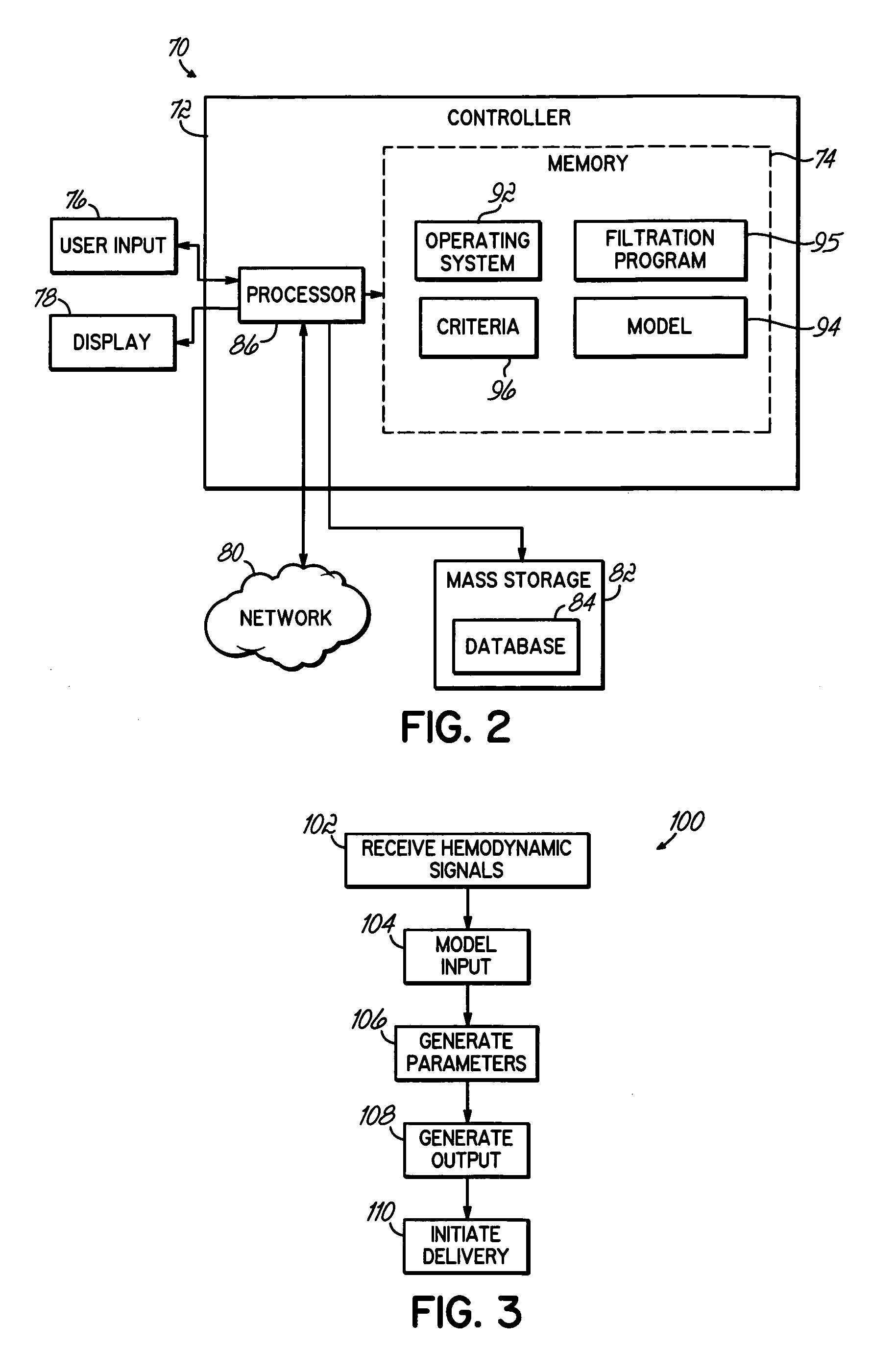Extracorporeal renal replacement modeling system
a renal replacement and modeling system technology, applied in the field of extracorporeal renal replacement therapy, can solve the problems of increasing the cost of therapy, lack of flexibility and accuracy of current systems for monitoring and controlling renal replacement procedures, and inability to achieve satisfactory automatic control of the pumps employed, so as to increase the autonomy of an extracorporeal renal replacement system, reduce medical costs, and repeatability and accuracy
- Summary
- Abstract
- Description
- Claims
- Application Information
AI Technical Summary
Benefits of technology
Problems solved by technology
Method used
Image
Examples
Embodiment Construction
[0023]FIG. 1 shows a system 10 configured to continuously optimize an ultrafiltration rate during a filtration process by modeling physiological and actual rate data. The system 10 maps the sensed, physiological data to a mathematical model to assess the data in terms of the ultrafiltration rate. The model provides parameters used to predict where the treatment is headed based on current conditions. The system 10 may process the parameters in terms of preset criteria to generate the optimized ultrafiltration rate.
[0024]Turning more particularly to FIG. 1, a extracorporeal renal replacement system 10 generally includes an extracorporeal hydraulic circuit with a filter, such as a filter 12 and a blood flow pump 14 that directs a flow of blood to be cleaned from the circulatory system of a patient (not shown), which may be an adult, pediatric or neonatal patient, to the filter 12. An arterial blood line defined by convention in the form of an inlet conduit 16 is connected with the pati...
PUM
| Property | Measurement | Unit |
|---|---|---|
| blood flow rate | aaaaa | aaaaa |
| flow rate | aaaaa | aaaaa |
| elasticity index | aaaaa | aaaaa |
Abstract
Description
Claims
Application Information
 Login to View More
Login to View More - R&D
- Intellectual Property
- Life Sciences
- Materials
- Tech Scout
- Unparalleled Data Quality
- Higher Quality Content
- 60% Fewer Hallucinations
Browse by: Latest US Patents, China's latest patents, Technical Efficacy Thesaurus, Application Domain, Technology Topic, Popular Technical Reports.
© 2025 PatSnap. All rights reserved.Legal|Privacy policy|Modern Slavery Act Transparency Statement|Sitemap|About US| Contact US: help@patsnap.com



